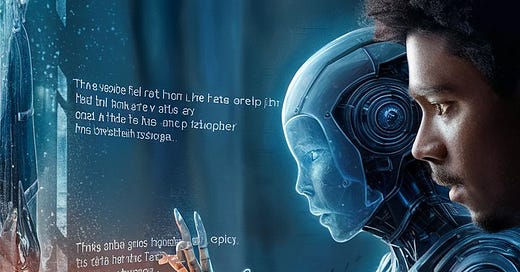Imagine watching a silent film and hearing a dramatic score that perfectly matches the unfolding scenes, or viewing archival footage brought to life with rich, realistic sound effects. Google DeepMind’s groundbreaking new technology, V2A, is making this a reality. By generating synchronized audio from video pixels and text prompts, V2A is poised to revolutionize content creation across industries. Filmmakers can now effortlessly add immersive soundtracks to their silent videos, educators can enhance learning materials with contextually relevant sounds, and digital artists can experiment with limitless creative possibilities. This innovation is not just about adding sound; it’s about transforming the way we experience media.
Innovating at the Intersection of Video and Audio
DeepMind’s recent research leverages advanced AI models to produce soundtracks dynamically synchronized with video pixels, using text prompts to guide the audio’s tone and context. This approach promises to revolutionize content creation, providing filmmakers, advertisers, and digital creators with the ability to craft more immersive and engaging experiences.
The Power of V2A Technology
V2A can be paired with video generation models like Veo to create shots with dramatic scores, realistic sound effects, or dialogue that matches the characters and tone of a video. This breakthrough offers a wide range of creative opportunities, from enhancing silent films to adding immersive soundtracks to archival footage.
Example of V2A technology
"Positive" and "Negative" Prompting
One of the most exciting aspects of V2A is its flexibility. Users can generate unlimited soundtracks for any video input, using ‘positive prompts’ to guide the desired sounds or ‘negative prompts’ to avoid unwanted audio elements. This allows creators to experiment rapidly and choose the best match for their video content.
For example, a positive prompt like “cinematic, thriller, tension” could produce a suspenseful score for an action scene, “cute baby dinosaur chirps, jungle ambience” could generate playful and immersive sounds for a nature documentary, and “drummer on stage, concert, cheering crowd” would create an energetic and lively atmosphere for a music video.
Conversely, negative prompts can be used to steer clear of unwanted sounds. For instance, using “no traffic noise” could ensure a serene and quiet background for a nature scene, “no dialogue” could maintain the focus on instrumental music, and “no sudden loud sounds” could keep the audio smooth and consistent for a calming video.
How It Works
DeepMind’s V2A system starts by analyzing the video to understand its visual elements. Then, it uses a special AI method called a diffusion model to create audio from random noise, guided by the visual input and text prompts. Finally, this audio is fine-tuned and combined with the video, producing a synchronized, high-quality soundtrack.
Addressing Challenges and Ethical Considerations
DeepMind acknowledges several challenges in V2A technology, such as improving lip synchronization for videos involving speech and ensuring high-quality audio output even when video quality varies. Ongoing research aims to address these limitations and enhance the overall performance of V2A technology.
Committed to responsible AI development, DeepMind collaborates with artists and creators to refine their technologies while considering ethical implications. The company has also incorporated its SynthID toolkit to watermark AI-generated content, safeguarding against potential misuse.
Final Thoughts
For those who work in Hollywood, this is yet another tool for enhancing the filmmaking process. For amateur filmmakers, these technologies offer entirely new worlds of possibilities. With a decent computer, an understanding of what makes a good film, and a knack for writing prompts, a single person could conceivably produce a solid, feature-length film.
Crafted by Diana Wolf Torres, a freelance writer, harnessing the combined power of human insight and AI innovation.
Stay Curious. #DeepLearningDaily
Vocabulary Key
• Diffusion-based approach: A method that refines audio from random noise iteratively, guided by visual input and text prompts.
• Autoregressive: A type of model where the output depends on previous outputs, often used in sequence prediction.
• Natural language text prompts: Phrases or sentences used to guide AI in generating specific types of audio or visual content.
• Lip synchronization: Matching audio of spoken words with the lip movements of characters in a video.
• SynthID toolkit: A set of tools developed by DeepMind to watermark AI-generated content, ensuring authenticity and preventing misuse.
Additional Resources for Inquisitive Minds:
Google's paper on Veo (video generation model)
Google's paper on SynthID (technology used to watermark images)
Follow @DeepLearningDaily on YouTube.
Follow @DeepLearningwiththeWolf on Spotify.
#deepmind #googledeepmind #google #airesearch #audiovisualai #deeplearning #deeplearningdaily #deeplearningwiththewolf






Diana, Thank you so much for writing these articles. You explain complex concepts like spoon feeding. Keep up the good work!!